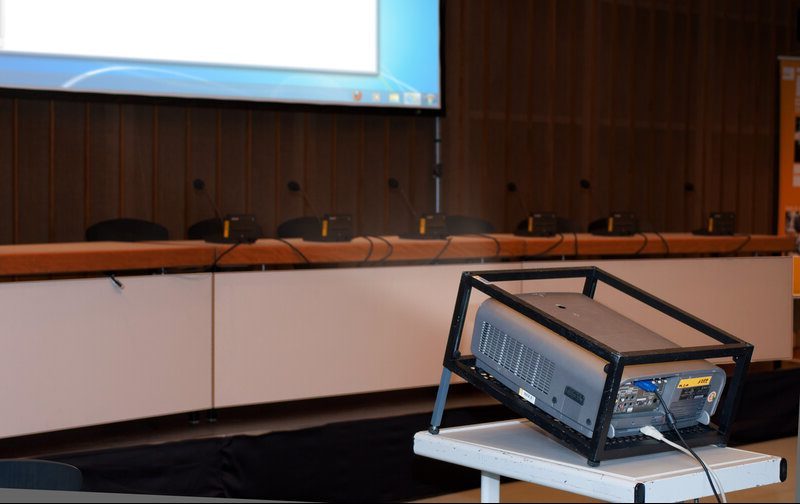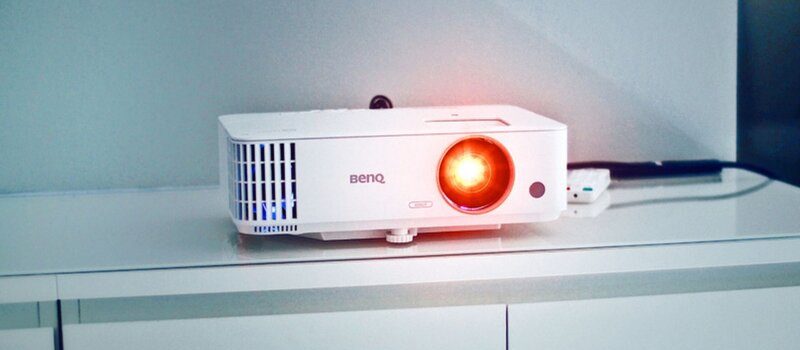The plug-and-play system of TVs is familiar. What about projectors? Do projectors need to be plugged in?
These products keep showing up with new technologies. To understand how to install it, you may have to check the manual book for details.
Display Central will help you find out if you have to plug in your projector and when you need to. Let’s read on to discover!
Table of Contents
Do Projectors Need To Be Plugged In?
The answer depends on the model you use. Most projectors require plugging to receive the electricity for their operation. However, rechargeable models are becoming increasingly popular and can be very practical.
Although plugged-in devices allow you to play games, watch movies, and give presentations without delay, they have drawbacks.
You must literally keep different cords out of your way as you use the projector, which is messy and potentially dangerous.
Rechargeable projectors
Rechargeable models include built-in speakers. Their lighting can last for several hours when completely charged due to their battery-powered functioning.
The cables of plugged models may run throughout your home, putting you at risk of stepping on them.
Rechargeable projectors eliminate the annoyance of the cords of plugged models. Their portability is a great benefit, enabling you to use them outdoors.
These products are getting more and more popular. But do they work as well as the traditional version?
Many of them adopt a technology known as “downsampling,” which decreases the quality of a high-resolution picture to a lower level.
A projector’s image is very sensitive to ambient light, which causes it to darken before reaching your monitor. The brighter the projection is, the better it can deal with light pollution.
Unfortunately, increased brightness leads to lowered battery life. Brightness won’t be as important if you’re planning to use the device at night, but it matters if you want it to replace your television in a well-lit space.
These products have advantages and disadvantages, just like any other technological device. Here are a few examples:
Pros:
- Most have large batteries.
- They come in a wide range of innovative designs.
- Most are lightweight and compact.
Cons:
- The volume of the built-in speakers is quite low.
- Image settings are limited.
- Regular maintenance is a must.

Some models run on batteries
Solar-powered projectors
Another choice is to use solar-powered products. They are quite portable, allowing users to move them around while recharging easily.
As long as the locale receives enough sunlight, these models can even work in remote areas without access to conventional power to aid in education and recreation.
If you want to buy these products, consider their pros and cons:
Pros:
- Solar power is green energy.
- You can move the projector around easily.
- The product helps reduce your electricity bills.
Cons:
- Make sure that your region receives enough sunlight.
If you are still hesitant about whether to buy a portable projector or not, this video can clear your path:
Pros And Cons Of Plugged-In Projectors?
Although portable models are convenient, some users still stick to the traditional versions. They will give you an impressive experience that the rechargeable models can’t replace.
The benefits and drawbacks of the products are as follows:
Pros:
- They enable continuous use without the need to be concerned about battery draining.
- They do not necessitate the use of a display. You can display it on any light-reflecting surface.
Cons:
- They require the usage of cords, which can make your room look messy and potentially cause accidents.
- Because almost all projectors use lamps, they will soon need a replacement. The cost of replacing projector bulbs is high.
- Some products are loud.
- Most need a separate sound system.

Plugged-in models are still a popular choice
Final Words
If you use a plugged-in projector, you have to plug it in so that it can run properly. Also, the rechargeable models eliminate the need for plugging.
Portable products help avoid accidents caused by messy wiring and allow you to move them around. However, plug-and-play items bring you a better visual experience.
Hopefully, this article has helped you understand projectors and their operations more. Thank you for reading!

Michael Brown has been a lead editor of the website display-central.com for a long time. He’s been a technology examiner for almost a decade, specializing in the best display solutions such as laptops, projectors, and TVs, Mobile. Michael will provide you with helpful and relevant knowledge and advice based on his technical background.

